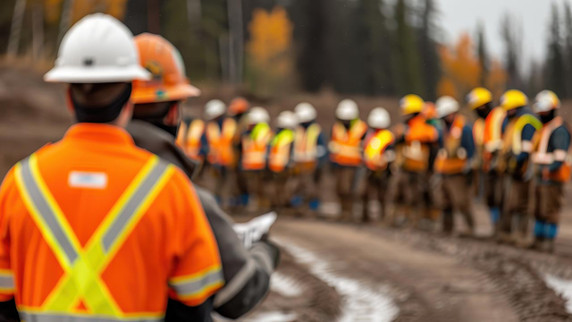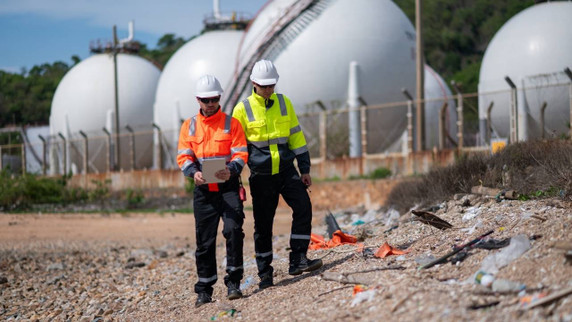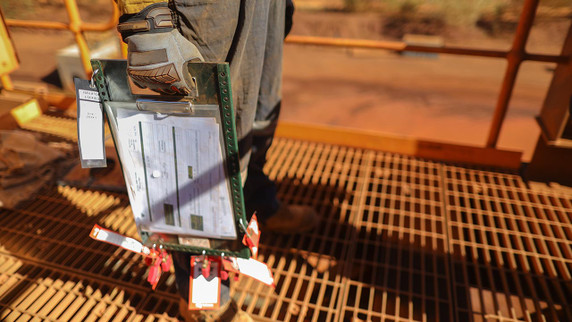On busy worksites, safety conversations need to be quick, clear, and memorable. That’s where toolbox talks come in.
A toolbox talk, sometimes called a pre-start or safety talk, is a short, informal meeting that focuses on one safety topic. Done well, they’re one of the most powerful ways to reinforce safe behaviour and open two-way WHS comm…
This is the fourth in a four-part series on building a comprehensive workplace safety system.
Your Safety Plan Isn’t a Set-and-Forget Document
In the first three weeks of our series, you've done the hard work: You've identified hazards, assessed risks, and implemented controls. But the job isn't done. The final and most crucial step in the safety…
This is the third in a four-part series on building a comprehensive workplace safety system.
The Gold Standard for Managing Risk
In Weeks 1 and 2, you learned how to identify hazards and assess their risks. Now, you’re ready for the most important part of the safety process: controlling those risks. But how do you choose the right control measure…
This is the second in a four-part series on building a comprehensive workplace safety system.
Understanding the Difference: Hazard vs. Risk
Last week, we focused on identifying hazards, anything with the potential to cause harm. Now, we'll talk about risk, which is the next critical step in your safety journey. Understanding the difference between thes…
This is the first of a four-part series on building a comprehensive workplace safety system.
The Proactive Approach to Workplace Safety
Every year, thousands of workers are injured or become ill on the job. The vast majority of these incidents were preventable. The key to a truly safe workplace isn't just reacting to accidents after they've happened, b…
Running a safe construction site is about more than PPE and toolbox talks. Clear, consistent documentation keeps jobs on track, hazards under control, and compliance risks off your shoulders.
For supervisors, safety officers, and small-team leads, having the right safety forms in place ensures nothing slips through the cracks. From inductions to incide…
In road transport, safety doesn’t stop with the driver. Australia’s Chain of Responsibility (CoR) laws make it clear that everyone in the supply chain has a part to play in keeping roads safe.
If a heavy vehicle is overloaded, driven by a fatigued operator, or scheduled on an impossible timetable, liability doesn’t rest with the drive…
Scaffolding Explained
A scaffold is a movable or temporary platform that provides workers access to a work area when working at a height above the floor or ground. They are erected using scaffolding poles, which are interconnected to form a secure structure. Scaffold refers to the temporary platform itself, while scaffolding refers to the entire system…
In high-risk industries, having the right safety controls in place can mean the difference between a safe day at work and a serious incident. One of the most effective tools for managing high-risk activities is the Permit to Work (PTW). The importance of PTWs lies in their role in creating a safe working environment by ensuring that all necessary safet…
Trust with customers and clients is vital for building lasting relationships and successful businesses. They depend on your products or services to meet their needs and expectations. The key to achieving this is delivering consistent quality in every area of your operations, and proving it. ISO 9001, a globally recognised quality standard, is one of th…
Quality is the degree to which a product or service meets the customer's needs or expectations. In simple words, quality is about meeting or exceeding expectations. Therefore, a Quality Management System (QMS) is needed to achieve and retain quality in an organisation.
What is Meant by a Quality Management System?
A quality management system (QMS) is a…
Understanding ISO
To grasp the concept of ISO 9001:2015, it's essential first to understand the key terms used throughout the standard, such as asking what ISO is and what quality management systems are.
ISO Meaning
ISO was founded in 1926 as the International Federation of the National Standardizing Associations (ISA), with the term ISO being derived…












